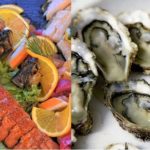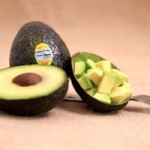Aquaculture Industry in China
China, alone accounts for a third of fish production, and two-thirds of the production of aquaculture worldwide. The main producing areas of China are close to urban markets in the Yangtze River valley and delta of the Zhu Jiang. With a coastline up to 14,500 km with a wide continental shelf, China has excellent coastal fisheries. Since 2002, China is the world leader in the export of fishery products. The world consumption of fish per capita was estimated at around 16.5 kg, with a Chinese consumption to 25.8 kg per person. Over the years, China’s fishing industry grew by inshore fishing at sea. The development of China’s aquaculture industry has created many job opportunities for men and women. Since 2003, there are around 5 million people working full-time in the sector. Most of China’s farms are privately or collectively.
Overview of Aquaculture Industry in China
There are about 50 different fish species grown commercially in China today, among which were: carp, Chinese bream, and blunt snout bream. The high-quality aquatic products such as shrimp, shellfish, tilapia, eel, large yellow croaker, crabs, etc. are still the main export varieties, with a total export value of 49.74 % among the total exports of the aquatic products in the same year. The market share of items cultivated for the production of freshwater aquaculture is: Silver carp and bighead carp 30.10%, Tilapia 4.20%, Common carp 13.20%, Crucian carp 10.00%, Chinese river crab, giant prawn and soft-shelled turtle 3.40%, Black carp 1.30%, Chinese bream and blunt snout bream 3.30%, Grass carp 20.20%, Eel 1.0%.
In 2014, China’s output of aquatic products amounted to 64.1 million tons, an annual increase of 8.2%. The coastal province of China such as Shandong, Fujian, and other coastal provinces are major exporting provinces of aquatic products from China. the export volume of Shandong and Fujian represents 48.8% of the total exportation. Japan, the United States, Europe and South Korea are still considered the most important destinations for the export of aquatic and fishery products in China.
Dalian Yiqiao Marine Seeds Co., Ltd., is the leader in the cultivation of marine plants in China and is directly involved in the cultivation. It possesses a total of 143,000 cubic meters of breeding water bodies, including the addition of 61,000 cubic meters in 2014. The Company has its main market in Liaoning province in which turnover in 2011 swept by 96.6 % of total company revenue.
Zhangzidao Fishery Group and Homey Group, which specialize in aquaculture, also have relatively high consolidated gross margin up to 22.7% and 34.1%. The Homey Group’s marketing strategy has always focused on the promotion of breeding sea cucumber business, with an annual sales increase of 72.39%, the income for the sea cucumber sales reached over 420 million RMB.
During the same year, Homey has invested more than 1.09 billion RMB in extending its cucumber industry, with around 76,000 square meters of sea cucumber seedling, an ongoing project to increase its production. The culture of fresh water is the most interesting part of the aquaculture industry in China, having an outlet with more than 60%. Aquaculture in freshwater, fish are the primary varieties, which represents approximately 88% of total production of freshwater cultured; while in mariculture shellfish are the highest output, a share of more than 70% of the total seaculture production.
Main Aquaculture Regions in China
Regions such as Guangdong, Shandong, Fujian, Jiangsu and Hubei provinces are the main aquaculture in China, with total production reaching over 50% of the national production. Indeed, Guangdong is the largest province in terms of aquaculture, with a production of freshwater cultured equal to the mariculture; Fujian and Shandong prioritize the seaculture; while Jiangsu and Hubei are especially involved in the freshwater breeding.
The aquaculture industry in China is generally made up of farmers, cooperatives, and companies, among which the aquaculture companies have an advantageous position in the competition, but with insufficient power to influence the market. the Chinese aquaculture companies consist mainly of Zhanjiang Guolian Aquatic Products Co., Ltd., Dalian Yi Qiao sea cucumber Ltd., ZONECO Group, Shandong Oriental Ocean Sci-Tech Co., Ltd., Pure Pearl Group Co., Ltd, Dahu aquaculture Company Limited and Shandong Homey aquatic Development Co., Ltd.

ZONECO Group is particularly focused on the seaculture business, offering the biggest clear seawaters in China. In August 2015, the company makes a public announcement for their first plan to invest in O2O platform with a 1.45 billion RMB of investment. Dahu Aquaculture Company Limited is the largest base of freshwater fish and in possession of about 1.8 million mu (1/15 = 1mu hec.) Water surface in China represents 4, 9% of the surface of reservoirs and lakes for the aquaculture industry in China. It focuses its strategy on building its marketing network and complete industrial chain through acquisitions and capital increases in the past two years.
Development Environments of China Aquaculture Industry
With the advent of new technologies of culture and the increasing growth in consumption of aquatic products per capita, with both industry output value of the Chinese fishing and the output of aquatic products which evolves year after year. In 2015 the value of gross output of the fishing industry in China has reached more than 2.0859 billion RMB; National aquatic products production pays around 64.615 million tons, up to 4.7% from the previous year.
China is the largest fish exporter in the world. In terms of imports, China ranks sixth. For the following years, China has to increase the amount of fish imported to meet the local market needs. China exported a total of 10 billion US $ fish per year while imports are estimated at 4 billion US $.
One of the greatest difficulties of the fishing industry in China is the overfishing. The waters of the northeast of China are overused, causing the degradation of the marine life, such as the sardines disappearance. The destruction of the marine life is due to the increase of Chinese’s’ seafood consumption.
Although overfishing is proven to be a big issue for the market, China’s fish sector also encounter other difficulties in the field of fish farming. while agriculture seafood has little interest in the protection of the environment, many of the wild stocks of China’s coastal areas have disappeared because of the low supply of grain and private breeding grounds. Moreover, power excrement and uneaten fish in the farms are becoming a severe issue for the pollution in areas and coastal waters of China.
You enjoy reading this article and would like to know more about the Chinese market, contact us at dx@daxueconsulting.com














